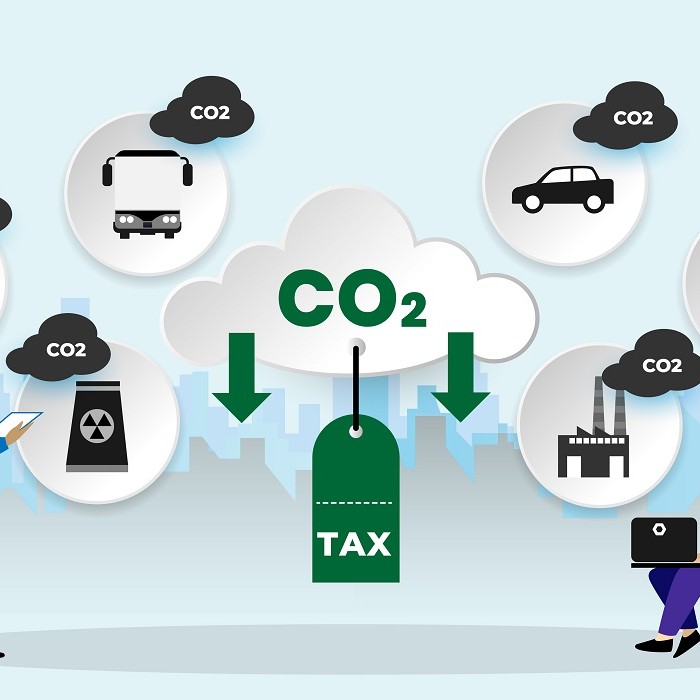If it’s still possible to hold global warming to relatively safe levels, doing so will require global cooperation, billions of dollars and big changes, according to a 2022 report by climate experts working for the United Nations.
“The pace and scale of what has been done so far and current plans are insufficient to tackle climate change,” said Hoesung Lee, the chair of the UN climate panel. “We are walking when we should be sprinting.”
One area picking up pace is IT sustainability. As the world increasingly relies on digital technologies, skyrocketing the creation of more applications and data, many IT leaders are shifting their organizations to more environmentally efficient operations. As they build out their hybrid multicloud IT operations, many want to build in sustainability measures and best practices.
The Enterprise Cloud Index report released by Nutanix in March 2023 showed that 60% of the nearly 1,500 global IT decision makers surveyed use more than one IT infrastructure, whether it is a mix of private and public clouds, multiple public clouds, or an on-premises data center along with a hosted data center. That number is expected to grow to nearly three quarters (74%) in the near future. However, mixed infrastructures create new management challenges, and 94% of respondents say they'd benefit from having a single, unified place to manage applications and data across their diverse environments.
Organizations face managing diverse workloads and often unpredictable costs spread across data centers, private clouds, public clouds, edge locations, and software-as-a-service (SaaS) deployments. Adding further complexity to IT investment decisions is making sure they align with sustainable IT goals, which requires the collection and reporting of sustainability and audited environmental, social, and governance (ESG) data.
Enter the cloud economist: a professional who understands the technical and financial facets of cloud deployments and usage.
The term began surfacing in 2020, when publications like InformationWeek featured articles on the need for such individuals among enterprise IT organizations. Cloud economists look at how best to deploy and fund cloud deployments on a per-use-case basis.
“Customers really need help understanding the business value of different cloud solutions,” said Steen Dalgas, a cloud economist for Nutanix based in London.
He helps Nutanix customers establish the business case for each cloud solution, understand how best to finance it, and find financing solutions that meet their needs. He also points out IT sustainability factors that are increasingly important to build into strategies and investments.
Cloud on the Balance Sheet
A chartered accountant and auditor, Dalgas spent 21 years at IBM in asset financing. During his tenure there, leasing and mega IT outsourcing deals were the preferred methods of underwriting enterprise computer hardware and software. All of that changed after the Enron scandal that exposed Enron’s rampant fraud based on a loophole that allowed companies to exclude most leases from balance sheets. Afterward, legislation mandated the inclusion of leases, giving investors a more accurate picture of a company’s health.
In 2016, Dalgas joined Nutanix on a team of cloud economists that now numbers 25, with personnel based in the U.S., Europe, and Asia. Dalgas works with companies to answer questions like: Is it optimal for a particular application workload to be deployed in a public cloud? Is a cloud solution for the workload really cost-efficient?
For every cloud solution a customer contemplates, Dalgas helps calculate the total cost of ownership (TCO) and return on investment (ROI), understand the optimal deployment, and obtain financing.
“In the past five years, customers have gone from a public cloud-first bias to recognizing that public cloud is expensive and not for everything,” said Dalgas.
“I ran the numbers and I’d say for 80% of use cases, it doesn’t make sense to use public cloud because of the cost. Instead with hybrid multicloud architectures and SaaS growing in popularity, we’re seeing a cloud-smart approach, based on the thorough evaluation of each use case.”
Understanding the Business Case for Today’s Cloud
Dalgas and his fellow cloud economists have three main roles: They help customers establish the business case for a particular cloud solution. They help them understand how they want to pay for it (e.g., as a capital expenditure or using a consumption-based/as-a-service model). And they help find the best financing solution that meets each customer’s needs.
“There is absolute value in public cloud but for the right use cases,” said Dalgas.
“If you're a software developer and you need to get access to resources super quick or you're a startup, it's absolutely brilliant [to use the public cloud] to scale and get access to credit in the market.”
Some customers will have private clouds with workloads that have to be on-premises because it’s more cost-effective or because data sovereignty or regulatory compliance rules require it.
Other workloads are far more cost-effective when run in a public cloud.
“Some use cases that fit really well in public cloud, for example, are systems that need to dramatically scale and get off the ground quickly,” he said.
“Once they’re running and you know how they’re going to work, you have the option to repatriate those workloads [onto private infrastructure] later, if it makes sense. And then there are use cases that don’t justify a cloud solution and I tell the customer that.”
Dalgas and his team help their customers articulate the value of each cloud solution by developing board-level presentations they can give to their management. Nutanix cloud economists use a direct-to-cloud estimation tool to calculate the cost of supporting a given workload in one environment or another.
For example, it can estimate the costs of running 50 virtual machines (VMs) in the public cloud compared to running them on Nutanix hyperconverged infrastructure (HCI).
Help with Structuring, Financing, and Sustainability
Cloud economists use the Socratic method to help structure cloud solutions ― they ask a lot of questions. What is the cash flow impact? What is the optimal way to pay for supporting the workload? What is the ROI of each option?
“We try to understand our customers and put ourselves in their shoes,” said Dalgas.
“For example, public sector organizations tend to operate in five-year cycles, so the way financing is structured should take that into account.”
Nutanix cloud economists work with an array of financial partners so each customer can find the best fit that meets their budgets and financing preferences.
Another trend Dalgas considers to be disruptive to infrastructure spending is the push to achieve sustainable ESG scores. A report by Morningstar found that the 50 U.S. companies with the best ESG scores had 33.3% returns for the year, beating the broader U.S. market by more than 8%. That success has sparked sustainable investing and added greater scrutiny to the broad costs of one IT investment approach over another.
With evolving TCO based on different computing architectures, usage payment options, and sustainability requirements, the ground is shifting under IT decision makers. Using a cloud economist to help speed the process of optimizing the deployment, financing, and reporting on every workload is a best practice whose time has come.
Gene Knauer is a contributing writer who specializes in B2B marketing for technology companies.
© 2023 Nutanix, Inc. All rights reserved. For additional legal information, please go here.






